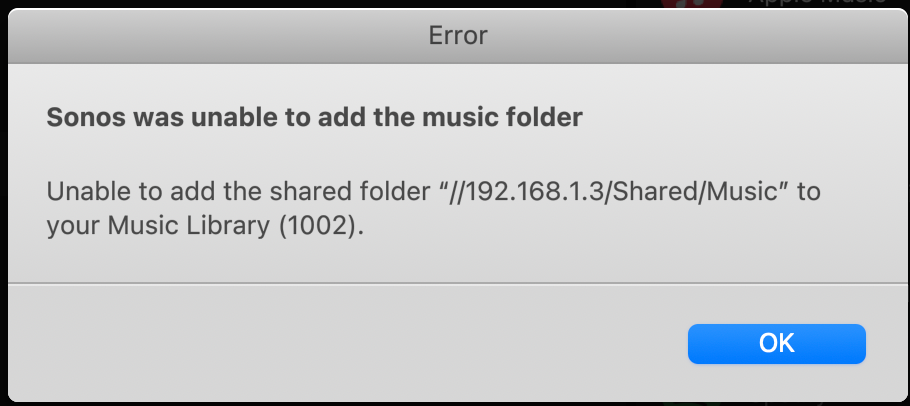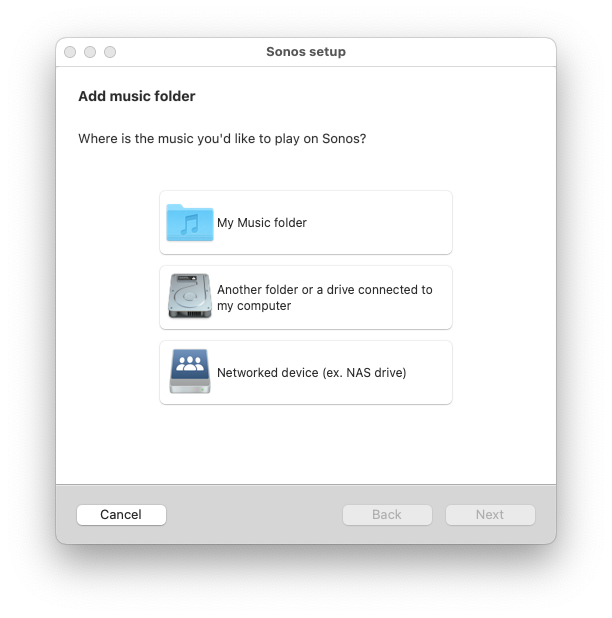A problem with the last update, lost my music library (error code 913) using a MAC computer. I have read the posts from other users in the community and tried multiple work arounds. I called Sonos support, waited for an hour. The tech took control of my computer and could not fix the issue. I was told by Sonos tech support to call Apple to help fix my issue that Sonos created. That was my tech support experience. I did get a case number with no solution. When is Sonos app update that is going to fix this issue be announced? When is the company going to address the issue and give updates to the solution?
Error 913 on a MAC
Best answer by Corry P
Hi
Welcome to the Sonos Community! And, apologies for the delay.
Sorry to hear that you are having issues with playing your Music Library stored on a Mac, and that our support agent was unable to help. I don’t want you to be under any false impressions here, so please be aware that there is no “fix” for this coming - support for SMBv1 was removed on purpose and will not be returning.
There is, however, no reason why you shouldn’t be able to get your Music Library working once more - it’s just that some reconfiguration is needed.
Please see our Add your music library to Sonos and Share your macOS music folder with Sonos help pages for instructions.
There is also a user-created guide with screenshots at:
I hope this helps.
Enter your E-mail address. We'll send you an e-mail with instructions to reset your password.





